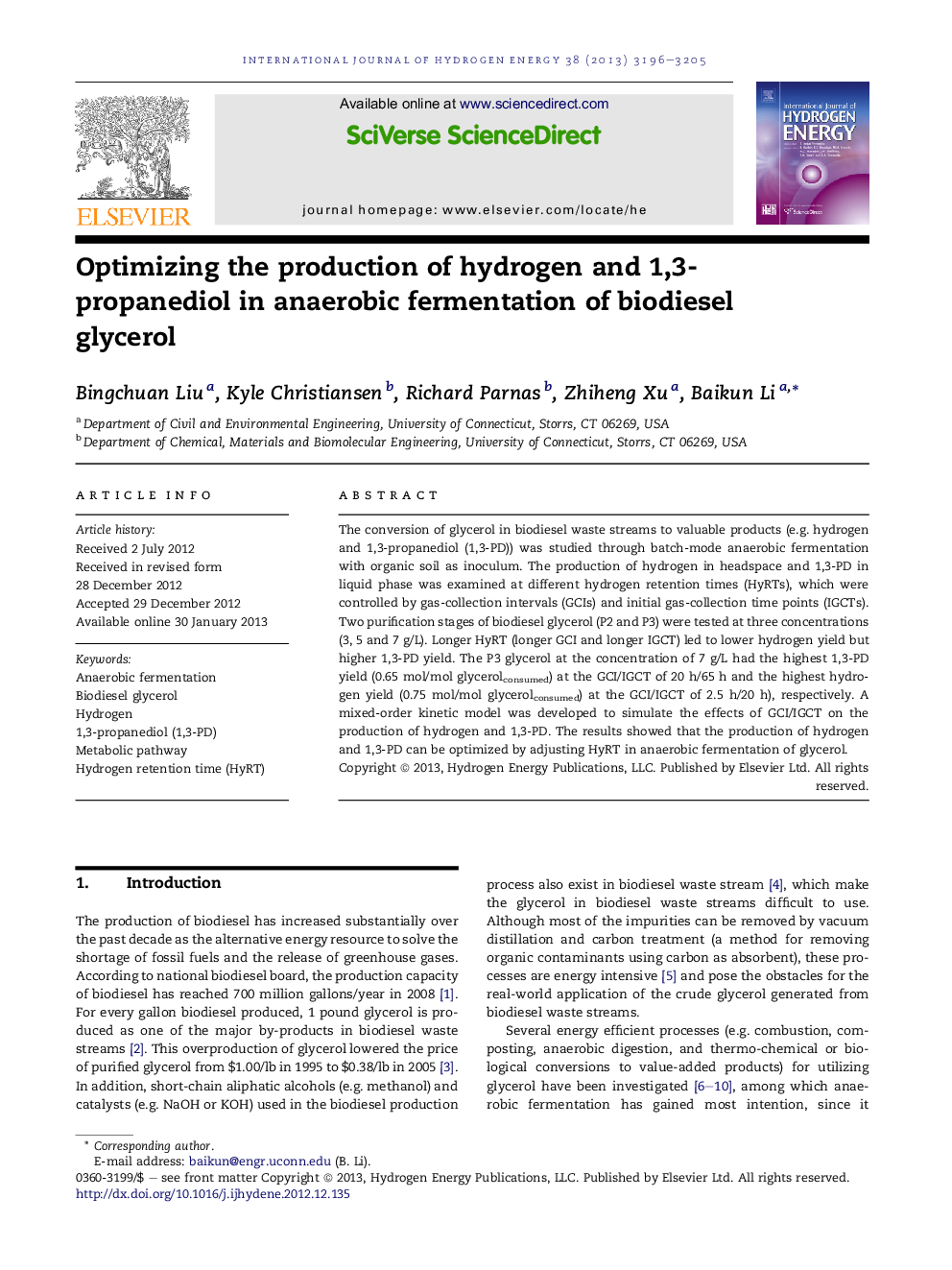| Article ID | Journal | Published Year | Pages | File Type |
|---|---|---|---|---|
| 1275734 | International Journal of Hydrogen Energy | 2013 | 10 Pages |
The conversion of glycerol in biodiesel waste streams to valuable products (e.g. hydrogen and 1,3-propanediol (1,3-PD)) was studied through batch-mode anaerobic fermentation with organic soil as inoculum. The production of hydrogen in headspace and 1,3-PD in liquid phase was examined at different hydrogen retention times (HyRTs), which were controlled by gas-collection intervals (GCIs) and initial gas-collection time points (IGCTs). Two purification stages of biodiesel glycerol (P2 and P3) were tested at three concentrations (3, 5 and 7 g/L). Longer HyRT (longer GCI and longer IGCT) led to lower hydrogen yield but higher 1,3-PD yield. The P3 glycerol at the concentration of 7 g/L had the highest 1,3-PD yield (0.65 mol/mol glycerolconsumed) at the GCI/IGCT of 20 h/65 h and the highest hydrogen yield (0.75 mol/mol glycerolconsumed) at the GCI/IGCT of 2.5 h/20 h), respectively. A mixed-order kinetic model was developed to simulate the effects of GCI/IGCT on the production of hydrogen and 1,3-PD. The results showed that the production of hydrogen and 1,3-PD can be optimized by adjusting HyRT in anaerobic fermentation of glycerol.
► The effect of HyRT on the production of hydrogen and 1,3-PD in anaerobic fermentation of glycerol was studied. ► First, hydrogen yield increased at shorter HyRT (shorter CGI and IGCT), while 1,3-PD yield decreased at shorter HyRT. ► Second, hydrogen yield from the old organic soil was lower than from fresh soil, but 1,3-PD yield was similar. ► Third, glycerol purification did not affect the production of hydrogen and 1,3-PD yields. ► Fourth, the production of hydrogen and 1,3-PD can be optimized by adjusting HyRT in anaerobic fermentation.
